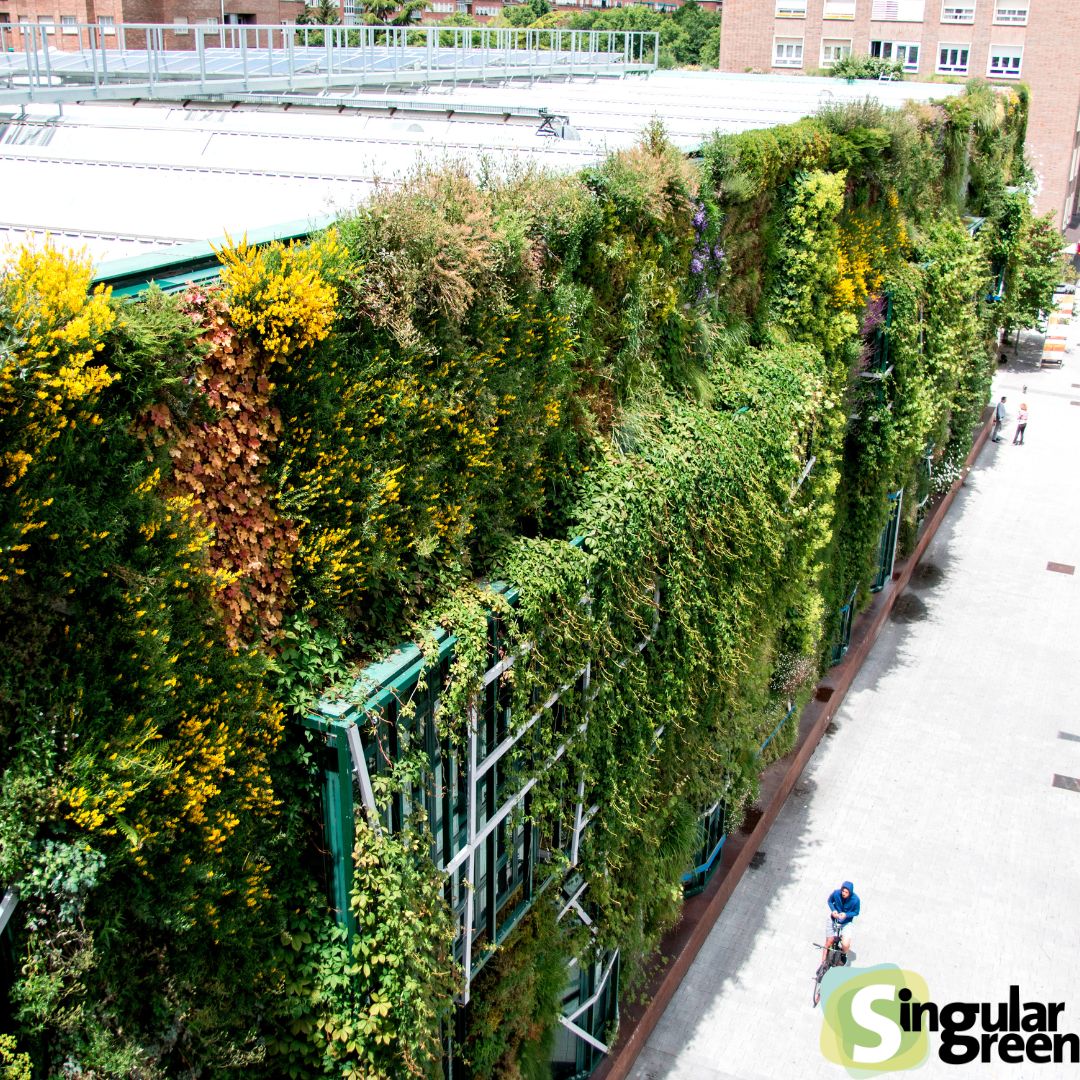When we go into a forest we experience a very satisfying feeling of freshness, but what if I tell you that it is possible to transfer it to enclosed spaces such as small offices, homes by means of vegetable air conditioning.
We are currently installing a plant air conditioning system called SingularAir which we are going to explain below.
Problems
Before we start it would be good to focus on the following data:
Currently the energy consumption is skyrocketing and this brings with it serious problems such as the sick building syndrome. In these places there is a recirculation of the air inside the building with the aim of saving energy, which consequently causes an accumulation of pollutants in the recirculated air. In order to remove this accumulation of pollutants, various air purifiers must be used, but this is costly, as the filters to be used are expensive compared to the use of plants.
This peculiarity makes plant-based air conditioning an ideal alternative to more powerful air conditioning systems.
What is plant air conditioning?
Vegetable air conditioning is a simple system in which air is recirculated through a vertical garden, causing the plants to evapotranspirate heavily. In order to cool itself, the vegetation cools all the air necessary to maintain the room at a suitable temperature. All this cooling is done by adding humidity to the air, thus creating a healthy environment.
Characteristics of vegetation air conditioning: SingularAir
Absorption of air pollutants
Each vertical garden has a great capacity to fix CO2 and release oxygen. In addition, certain plant species used in our system absorb specific pollutants produced by our daily objects. In offices and homes, many chemical substances can be found (such as formaldehyde, benzene and trichloroethylene) which cause various health problems.
Energy savings
Vegetable air-conditioning consumes six times less energy than a conventional air-conditioning system including the consumption of the vertical garden lighting if needed, making it a more sustainable solution.
Bio-regulated cooling
Plant-based air conditioning has a high capacity for self-regulation without the need for intermediaries. Plants are able to control the amount of water that evaporates depending on the environmental conditions such as humidity, temperature while a conventional air conditioner can only regulate the temperature.
Dimensioning
The cooling capacity of the plant air conditioning system depends on several factors:
- The plant species that make up the vertical garden.
- The ambient humidity.
- The speed of the air circulating through the system and the temperature.
Installation
Simple installation, where the only difference with respect to a conventional air conditioning system is that the plant air is recirculated through a vertical garden and not through a split system.
To carry out the assembly process, a series of metal profiles are needed, on which a perforated support (SG-P10-10) is placed, which together form an air chamber. A vegetation layer (SG-M500) is installed on top of the support, in which the roots grow and which is permanently humid due to the drip irrigation system installed in the upper area.
How the SingularAir system works
The warm air is drawn in from the room through the air ducts by means of a fan and is conducted to the air chamber of the vertical garden. The air passes through the perforated panel, the wet felt (where pollutants are absorbed) and the leaves of the plants (where evaporation-transpiration takes place). In this way we have the sensation of fresh air coming from the garden.
Types of vertical gardens
Air conditioning can be installed with various systems: together with our F+P hydroponic system (in all its variants) and with our LeafBox system (no longer in use).
Components of the vertical garden:
Supporting structure:
- Aluminium profile
- Anchoring bracket
Waterproofing:
- SG-P10-P panel
Plant support:
- F+P System: SG-M500 sheet: non-woven mineral substrate with double membrane.
- LeafBox System: SG-P-LB Panel: panel made up of a galvanised, plasticised steel mesh and filled with SG-SPH substrate.
Irrigation
- Double piping SG-R16
- Metal tank: with water supply and drainage points.
Installation of the plant air-conditioning system in the office.
In the following images you can see the installation of the plant air conditioning system in our office:
1. Laying of EPDM sheet as a waterproofing to create a watertight area for the air conditioning system.
2. Colocación de la perfilería de aluminio.
Laying of SG-P10-P panels
4. Sealing with polyurethane mastic to prevent water leakage.
5. Laying of the plant support together with the irrigation pipes
6. Planting
Here you can see a little bit of the evolution of the vertical garden during all this time:







